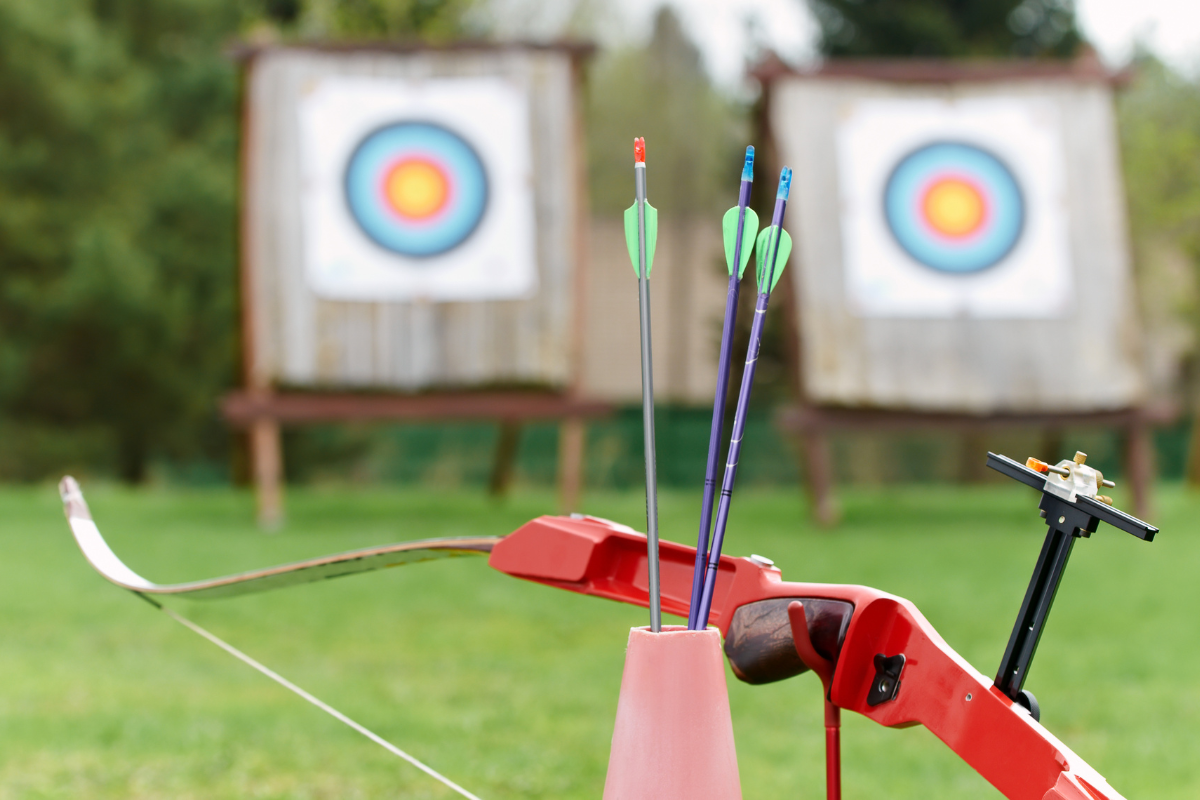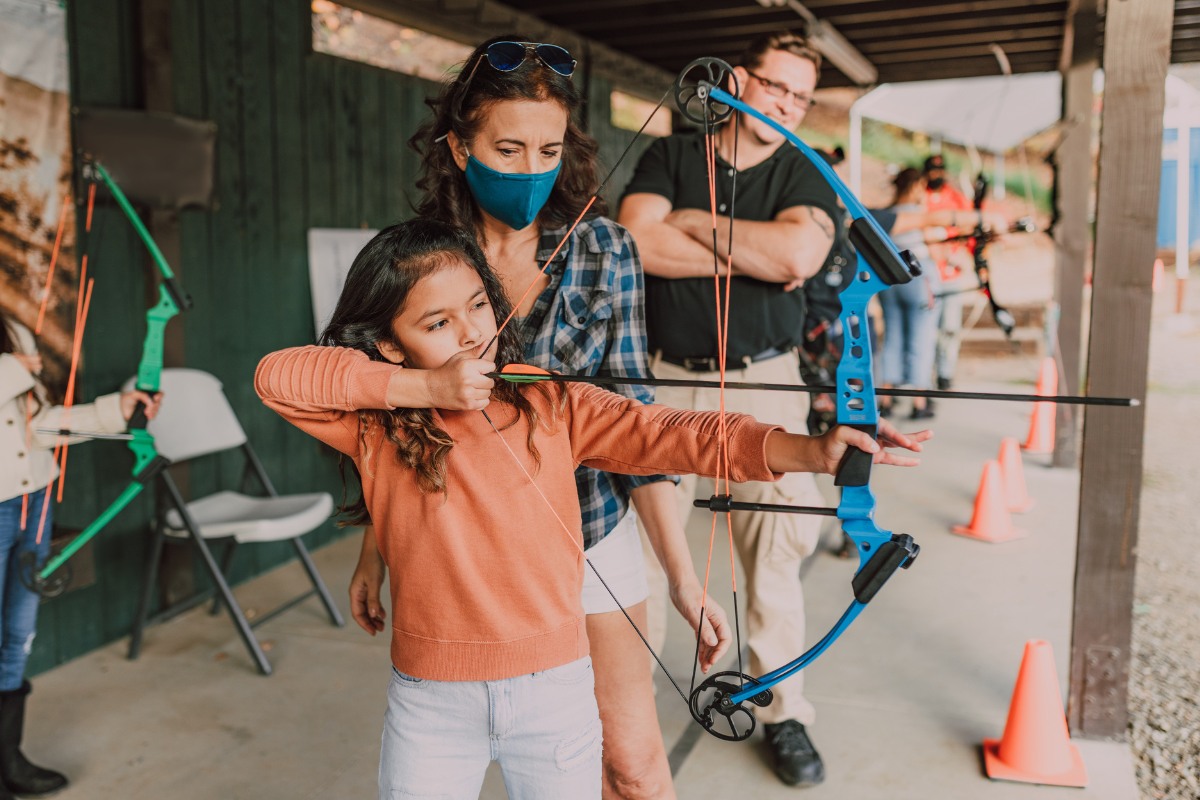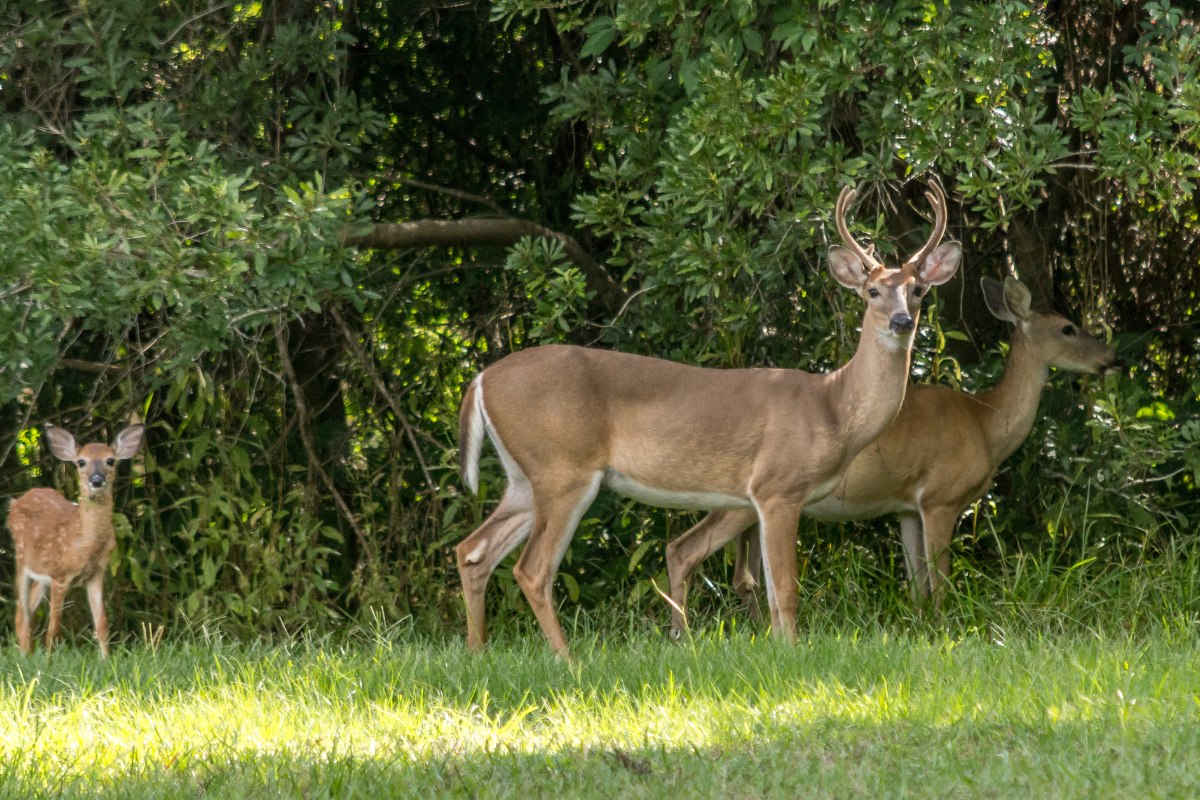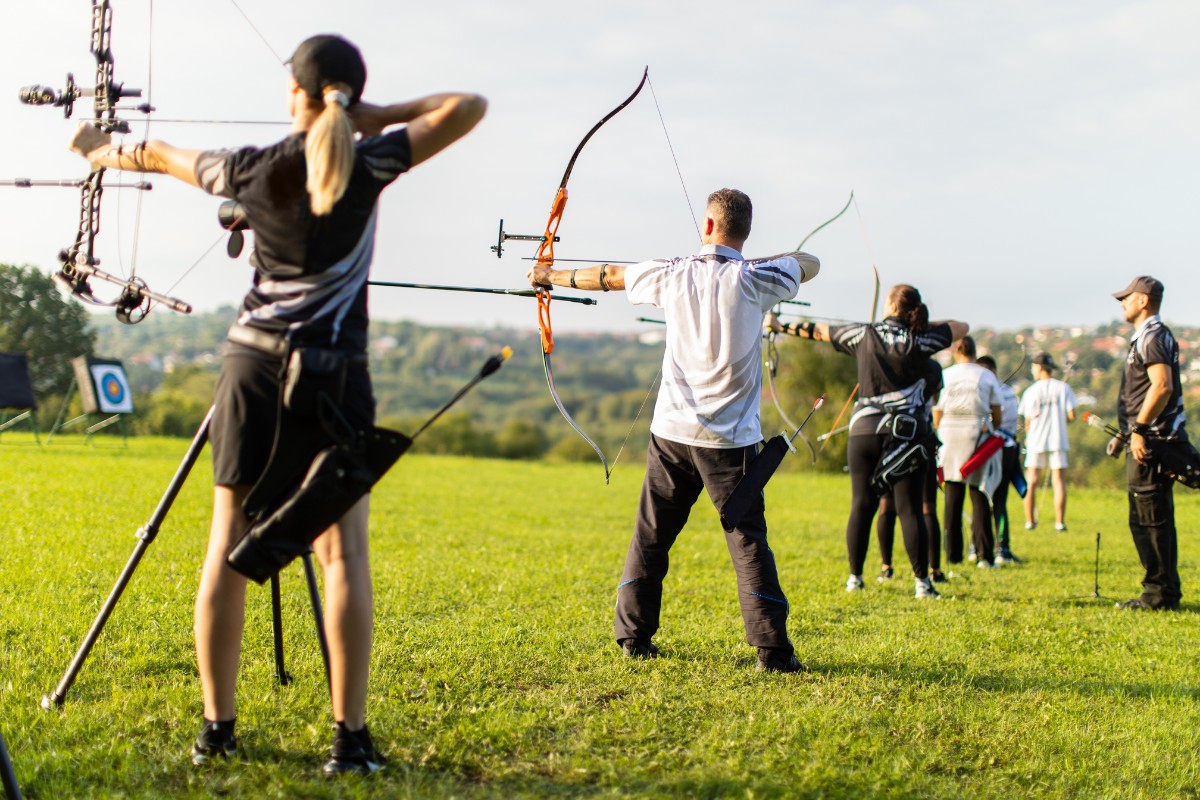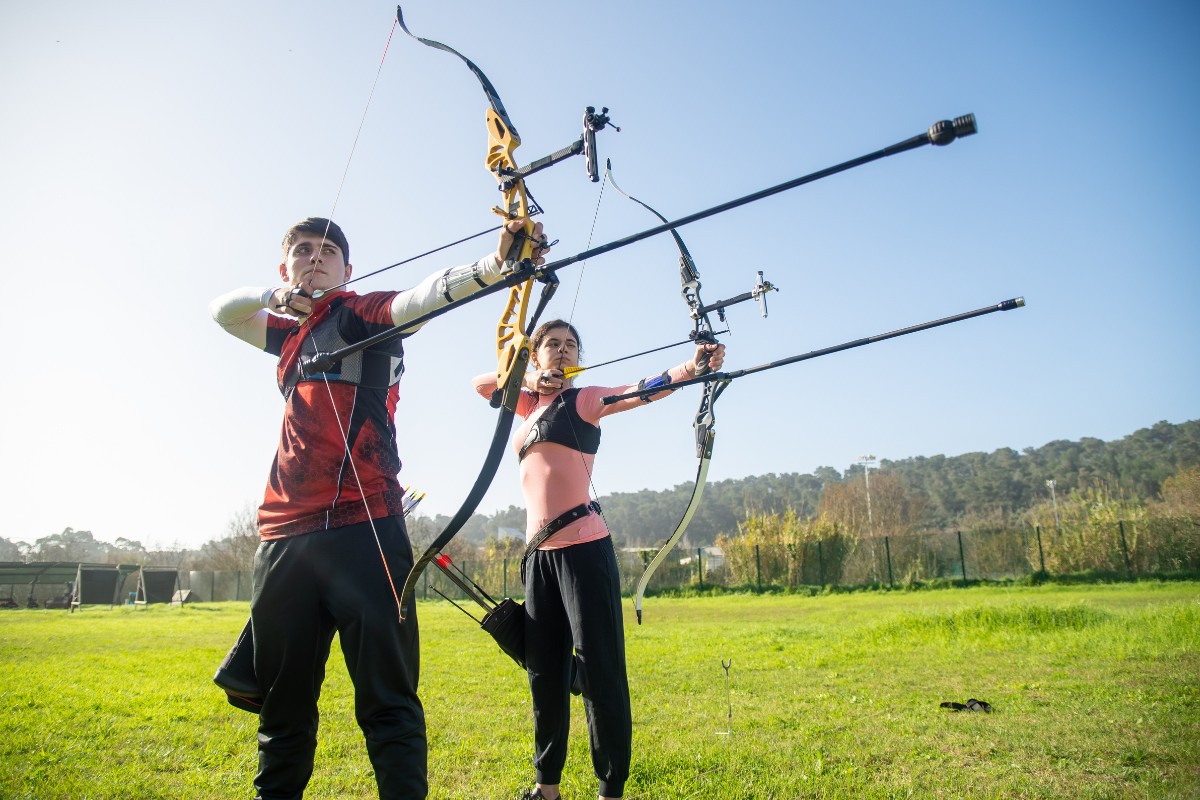Everybody loves summertime. For most people, it is the barbecues and cookouts, camps, picnics, hikes, and parties that make them look forward to it. But for us archers, it is also the best time to work on our form and hone our skills.
However, after a couple of inspirational Robin Hood episodes and the delivery of your new bow and arrow set, you have to answer the most important question: where can you practice archery?
Archery ranges and clubs, your backyard, fairgrounds, gun ranges, high schools, colleges, and town parks are just a few of the areas you can practice archery.
Few things are worse than having a beautiful brand-new bow but nowhere to practice. Although this problem is commonly experienced by beginners, you are not exempt from it even as a seasoned archer. You may move or travel to a new area and really need to shoot some arrows to feel at ease. Your favorite joint may have closed down temporarily, so you need a place to practice as you wait for the reopening. Whichever the reason, this guide has got you covered. It looks not only at the conventional practice spots but also takes you through some places you would never have thought viable, and they are right under your nose!
Archery Clubs and Ranges
There is no question that your local archery range is the number one go-to spot. If you don’t know whether there is an archery range in your area, then this should start you off. You will be required to pay a small fee per hour or per block of hours to access most ranges.
Unfortunately, most of them aren’t open during winter. This is where archery clubs come in. Most clubs have everything you need to practice. On top of the indoor and outdoor ranges, you get access to tutelage, which is one of the most critical factors for the success of a beginner archer. You also get access to the latest and most advanced accessories.
However, there is a catch. You have to be a member to enjoy some benefits, and the membership fee may be too high. If that is the case, or you just don’t want a long-term commitment, then explore the other options below.
Your Local Archery Shop
Pro archery shops often have some form of indoor shooting for potential customers to test before purchasing. Some have small shooting lanes, while others accommodate up to a full indoor range. Others even have realistic shooting games where you shoot blunt-tipped arrows at a screen projecting real animals. If you manage to work something out with the owner, they may allow you to practice there.
For some owners, it is as easy as talking yourself into it, and you will be allowed for free. Others will allow you for a fee.
Your Backyard
If you have enough room in your backyard to shoot, consider yourself very lucky. The thought of hauling gear into the car and sitting behind the wheel for thirty minutes to pay to shoot some arrows makes most archers keep postponing their sessions.
But if you can simply walk behind your house into a ready and waiting target range, you have no excuse, whatever the season. It is also the best way to play whole-family archery games. Besides, if it’s casual practice, you don’t really need a sophisticated place to shoot.
The general requirement of a backyard to be archery range-capable is a clear line of sight from the shooting line to the targets. A smaller space is more difficult to set up compared to a larger and wider one, but not impossible. The general procedure to follow is outlined below.
How to Set Up an Archery Range in Your Backyard
The most important consideration in setting up an archery range in your backyard is safety, especially if you are living in a densely populated area. Even the best of archers completely miss the target at times, sending the arrow flying meters from the target. If proper precautions are not in place, the arrow could cause serious injury.
Here are some instructions on how to design an outdoor archery range as described in World Archery and Archery GB guidelines. Although it talks about a general outdoor range rather than a backyard range, there are some important takeaways that you can benefit from.
Build a Backstop
A backstop is a material placed behind the target to catch the arrows as they go through or miss the target. They are typically made of spongy material to allow the arrow to sink in. If you make a backstop out of a hard material such as wood or stone, your arrows will break on impact. It should also be higher and wider than the target to catch errant arrows.
One of the most common and cheap ways is to use bales of hay. Hay is quite forgiving and will work for a long time without needing replacement. Stacking them 6 ft. high and 6 ft. wide will do. If hay is too unsightly, you can go for foam, which looks better and lasts longer than hay.
Other common backstop materials include:
- Cardboard boxes
- Puzzle mats
- Carpets
- Ethafoam
- Compressed straw
- Plastic and wood
Whichever material you decide to use, the backstop should be sturdy. This partially depends on your draw weight; the higher your draw weight, the sturdier the backstop should be. A popular way of ensuring sturdiness is setting it against a fence. However, it would only be used when you are practicing target archery.
Choose an Appropriate Target
Not all targets are designed to work with all types of bows and arrows. Some work only with field heads, so broadhead arrows won’t work with them. Others are designed to work with bows with low draw weight, say, 30 pounds. If you shoot using a 60-pound bow, the arrow will blow right through it. But this shouldn’t be much of a problem if you design a proper backstop with the instructions above.
The targets you can use in your backyard range are:
- Bag Targets – As the name suggests, bag targets are literally stuffed bags with targets drawn at the front. The stuffing helps stop arrows. They are easy to move around and set up as they can be placed on the ground or hung up using the handle at the top. With bag targets, you are only allowed to shoot field points and not broadheads.
- Foam Targets – Foam targets are generally preferable to bag targets. They have six shooting faces, while bag targets have just two. They also last much longer and can handle both broadheads and field points. They are available in different shapes and sizes.
- 3D Targets – 3D targets are imitations of real animals. There are virtually all species of these targets if you look hard enough. Some models even allow you to change the position of the target to shoot at it from different angles, as you would in a hunting scenario. You can also make it a little fun by going for 3D dinosaurs and zombie targets.
High Schools
If you are lucky, there may be a high school near you that offers archery programs or as part of their extracurricular activities. If there is, you can talk to the right person and request permission to use their facilities. You may be allowed to use them during off hours.
They may also allow you to practice in their other fields if they don’t have archery facilities. Although it looks like a long shot, it doesn’t hurt to ask.
Colleges and Universities
Although permission to practice in colleges and universities may be harder to acquire, it is totally worth it. They generally have more advanced archery facilities than high schools, which, if you manage to access for free, will give you the best chance of perfecting your skill.
Town Parks
The ability to shoot in parks varies from city to city, so you should do your due diligence. Ask the appropriate authorities and local town workers before you start shooting. It would be quite a shame if you were arrested while just enjoying your hobby.
Fairgrounds
A majority of towns and cities have land (public or private) that is used as the city’s fairground. They are used in intervals, so most of the time it is just lying idle. You can approach the owner or appropriate authority and ask for permission to practice there from time to time. You will most likely have to offer to pay a fee for them to agree.
Outdoor Gun Ranges
A number of outdoor gun ranges do not mind if you shoot some arrows on their land, provided you follow all their rules and guidelines.
Related Questions
Is It Legal to Practice Archery in My Backyard
Yes and no. It depends on your state, as it is illegal in some. In a majority, however, it is legal and governed by rules to ensure the safety of neighbors and passersby. Make sure you have complete knowledge of the state’s rules regarding it before starting.
Is It Legal to Practice Archery on Public Land
Yes, it is legal to practice archery on public land, provided the space is well suited for archery practice and you are not endangering the public. If you are uncertain, check with the appropriate local authority. As you practice on public land, follow the World Archery guidelines linked above to know how large the empty land should be for safety.
Final Thoughts
If you have just been bitten by the archery bug, or you have been at it for a while, you must have a place to shoot. It may be as easy as setting up your own backyard range, or you might have to sit behind the wheel a couple of times a week to get to the closest archery range. Just ensure that you leave no stone unturned as you investigate the available options because the easier it is for you to shoot, the more time you will spend getting better.
